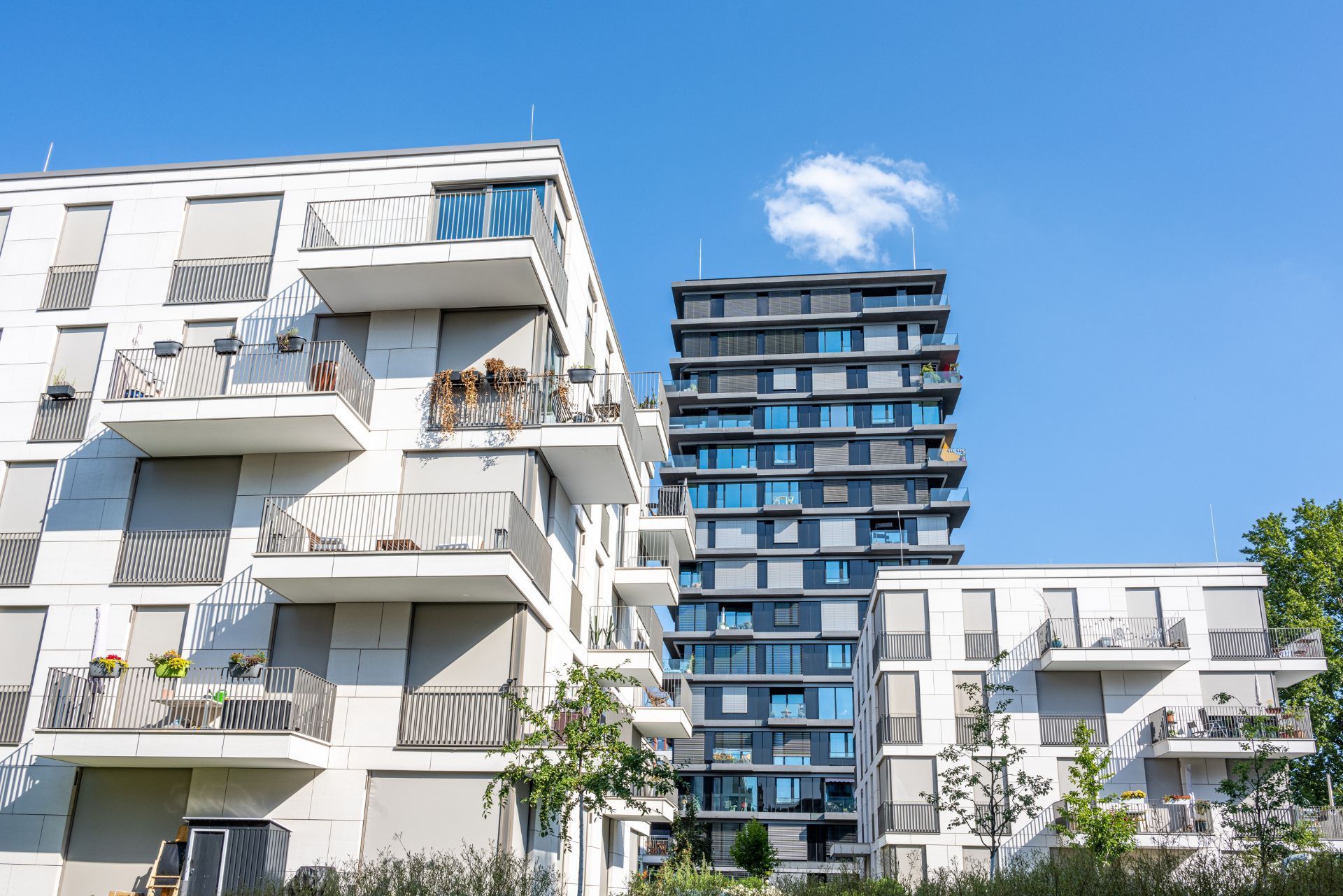Top 3 Recommended Policies

Condominium living offers a unique blend of community, convenience, and often, affordability compared to single-family homes. However, one crucial aspect that condo owners must navigate carefully is insurance. Condo insurance, also known as an HO-6 policy, differs significantly from standard homeowner’s insurance and requires a clear understanding of what it covers, how premiums are determined, and the current market challenges affecting costs and availability.
In recent years, condo insurance premiums have been on a rollercoaster, especially in states like Florida and Hawaii, where natural disasters and market dynamics heavily influence pricing. For example, Florida condo unit owners saw a slight increase in average premiums in early 2025, rising from $1,714 to $1,729, a 0.8% uptick according to the South Florida Sun Sentinel. While this increase may seem modest, it’s part of a broader context of fluctuating insurance costs that condo owners must understand to protect their investments effectively.
Understanding Condo Insurance: What Does It Cover?
Condo insurance primarily covers the interior of your unit and your personal belongings, as the condominium association’s master policy typically insures the building’s exterior and common areas. This arrangement means that condo owners need to focus on insuring what the association’s policy doesn’t cover, including:
- Personal property such as furniture, electronics, and clothing
- Interior walls, floors, and ceilings
- Liability protection in case someone is injured inside your unit
- Additional living expenses if your unit becomes uninhabitable due to a covered peril
It’s essential to review your condo association’s master policy to understand the coverage limits and gaps. Sometimes, associations carry a “bare walls” policy, leaving more responsibility on individual owners to insure interior fixtures and improvements.
Given these nuances, condo insurance policies can vary widely, and it’s important to choose coverage that matches your needs. Many insurers now offer digital platforms that streamline the process, such as State Farm’s new virtual property assessments, which help owners get accurate quotes and manage claims more efficiently.
In addition to the basic coverage options, condo insurance can also include endorsements or riders that provide extra protection for specific items or situations. For instance, if you own high-value items like jewelry, art, or collectibles, you may want to consider adding a personal property endorsement to ensure they are fully covered against theft or damage. Similarly, if you frequently host guests or rent out your unit, liability coverage can be expanded to protect you from potential lawsuits arising from accidents that occur during their stay.
Another important aspect to consider is the impact of
natural disasters on your condo insurance. Depending on your location, you may need additional coverage for risks such as
flooding or
earthquakes, which are often not included in standard policies. Many insurers offer specialized riders for these perils, allowing you to tailor your insurance to fit the specific risks associated with your geographical area. Understanding these additional options can provide peace of mind, knowing that you’re adequately protected against a range of potential threats.

Why Are Condo Insurance Premiums Rising?
The condo insurance market has been facing significant challenges, particularly in high-risk areas like Florida and Hawaii. Several factors contribute to rising premiums, including increased claims from natural disasters, a hardening reinsurance market, and shifts in the real estate market itself.
For instance, in July 2024, the Peninsula at Hawaii Kai condo community experienced a staggering insurance premium increase from under $400,000 to $3.3 million—nearly a tenfold jump. This sharp rise illustrates how insurers are reassessing risks and adjusting prices accordingly in regions prone to hurricanes and other natural hazards (Honolulu Civil Beat).
In Florida, the situation is somewhat similar. While the first quarter of 2025 saw only a modest 0.8% increase in premiums for condo owners, experts like John Lee, vice president of FirstService Financial, caution that this slight improvement masks the severe increases experienced in previous years. He notes that although insurance costs have stabilized somewhat, the past drastic hikes have left many owners financially strained (FirstService Residential).
Additionally, Hawaii Insurance Commissioner Gordon Ito highlighted that the reinsurance market suffered over $100 billion in losses for the fourth consecutive year in 2023, which tightens the availability and affordability of insurance for condos and other properties in vulnerable areas (Honolulu Civil Beat).
The impact of these rising premiums extends beyond just financial strain; it can also affect the overall real estate market. As insurance costs climb, potential buyers may be deterred from purchasing condos in high-risk areas, leading to decreased demand and potentially lower property values. This creates a vicious cycle where declining property values can further exacerbate the financial challenges faced by current owners, making it difficult for them to sell or refinance their units.
How Market Trends Affect Condo Insurance and Sales
The condo insurance landscape is closely tied to the real estate market’s health. Rising insurance premiums can deter potential buyers and impact sales volume, creating a feedback loop that affects both insurance providers and property owners.
Recent data from July 2024 shows a 5.5% decline in condo sales under contract compared to the previous year, while listings surged by over 27%. This imbalance signals a slowdown in the condo market, partly driven by higher insurance costs and the uncertainty they bring (Market Trading Essentials).
For condo associations, this trend is concerning because fewer sales and more listings may reduce property values and complicate the ability to secure favorable insurance terms. Insurance companies may become more selective, dropping coverage for some homeowners associations (HOAs), which further pressures the market.
Additionally, the increase in insurance premiums can often be attributed to a variety of factors, including climate change and the rising frequency of natural disasters. As insurers face higher claims due to severe weather events, they may adjust their pricing strategies, leading to increased costs for condo owners. This situation can create a ripple effect; as insurance becomes more expensive, potential buyers may shy away from purchasing condos, fearing that ongoing costs will outweigh the benefits of ownership. Furthermore, this trend can lead to a decrease in demand for condos in certain areas, particularly those deemed high-risk, which can further exacerbate the decline in property values.
Moreover, the implications of these market trends extend beyond just insurance and sales figures. They can also influence the overall community dynamics within condo associations. As property values decline, residents may face challenges in maintaining their units and common areas, leading to a deterioration in the quality of living. This can result in a cycle of disinvestment, where current owners are less willing to invest in upgrades or maintenance, further discouraging potential buyers. The community's reputation may suffer, making it even harder to attract new residents, which can ultimately affect the financial stability of the HOA and its ability to negotiate favorable insurance terms.
Innovations and Strategies in Condo Insurance
Despite these challenges, the insurance industry is evolving to better serve condo owners and associations. Advances in predictive modeling and technology are helping insurers price risks more accurately and offer improved services.
A notable example is a 2018 study that introduced a predictive modeling framework using pair copula construction to manage bundled insurance risks more effectively. This approach reportedly increased an insurer’s net revenue by 9%, demonstrating how sophisticated analytics can benefit both insurers and policyholders by optimizing pricing and risk management (arXiv).
Furthermore, digital platforms like those launched by State Farm facilitate virtual property assessments and streamlined claims processing, reducing friction for condo owners and speeding up insurance transactions (Datahorizon Research).
Condo associations and owners can also mitigate rising premiums by investing in risk reduction measures such as enhanced building maintenance, hurricane-proofing, and updated safety systems. These efforts can make properties more attractive to insurers and potentially lower costs.
In addition to these advancements, the rise of telematics and IoT (Internet of Things) devices is revolutionizing how risks are assessed and managed in condo insurance. Smart sensors can monitor various conditions within a property, such as water leaks or temperature fluctuations, and provide real-time data to both owners and insurers. This proactive approach not only helps in preventing potential damages but also allows for more personalized insurance policies that reflect the actual risk profile of a unit, rather than relying solely on historical data.
Moreover, the integration of artificial intelligence in customer service is enhancing the overall experience for condo owners. Chatbots and virtual assistants can now handle inquiries, provide policy information, and guide users through the claims process 24/7, making it easier for policyholders to get the support they need without long wait times. This shift towards automation not only improves efficiency but also allows human agents to focus on more complex cases, ultimately leading to better service and satisfaction among condo insurance customers.

What Condo Owners Should Do Now
Given the complexities of condo insurance and the current market conditions, condo owners should take proactive steps to ensure adequate and affordable coverage:
- Review your association’s master policy: Understand what is covered and what gaps you need to fill with your individual policy.
- Shop around: Compare quotes from multiple insurers, including those offering digital assessments, to find the best coverage and rates.
- Consider risk mitigation: Work with your HOA to implement safety and maintenance improvements that can reduce insurance risks.
- Stay informed: Keep up with market trends and regulatory changes, especially in high-risk states like Florida and Hawaii.
It’s also important to budget for potential premium increases, as the insurance market remains volatile. For context, the average homeowner’s insurance premium in Florida is around $3,600, approximately $1,000 higher than the national average, underscoring the cost pressures in this region (The Telegraph).
Additionally, condo owners should consider the implications of natural disasters on their insurance policies. For instance, hurricanes and flooding can significantly impact coverage needs, especially in coastal areas. It may be prudent to explore specialized policies or endorsements that cover these specific risks, as standard policies often have limitations. Engaging with a knowledgeable insurance agent can provide insights into the best options tailored to your unique situation and location.
Moreover, fostering a strong relationship with your condo association can lead to collective benefits. By collaborating on initiatives such as community safety drills or emergency preparedness plans, owners can not only enhance their personal safety but also potentially lower insurance premiums for the entire building. This cooperative approach can create a more resilient community while ensuring that all owners are on the same page regarding insurance matters and risk management strategies.
Conclusion
Condo insurance is a vital but often complex aspect of condo ownership that demands careful attention. Rising premiums, market volatility, and evolving risks make it essential for condo owners and associations to stay informed and proactive. By understanding coverage details, monitoring market trends, leveraging technological innovations, and engaging in risk mitigation, condo owners can better navigate the insurance landscape and protect their valuable investments.
As the market continues to evolve, staying educated and adaptable will be key to managing condo insurance costs and ensuring peace of mind in your home.
Contact Us
Phone
Location
